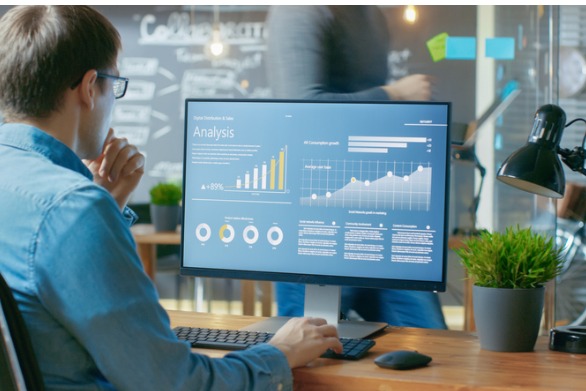Power BI For Business Users
Power BI a self-service Business Intelligence tools for Business Analyst, Sales Analysts and other Business Users.
If you consider yourself a non-technical person, have no knowledge of programming and technology but understand the business of your organization very well and you often deal with large set business data that your organization possess, you analyze the data and prepare reports or meaningful information which others in your organization can use for business decision, then Power BI is a right tool for you.
Power BI is a Self-service BI tool. This means that the Business Analysts (Or whatever business designation they carry) , who work on creating and designing analytical reports, which are then used by the senior management in their decision making process, can create these reports with minimal help from IT team or Business System or Database administrators.
Earlier, the same BA team would get different reports from different business systems such as CRM, Financial Accounting, Order Management, HRMS, they would also use some Excel reports maintained by other departments. Generally these different business systems don’t talk to each other and the BA team would spend days in transforming and combining these reports in Excel and bringing them to a format which is useful to create meaningful charts and reports. After adding some analysis to it, they would then send these charts and reports via email to the Management or share them via SharePoint etc.
With self-service BI, everything has changed. Power Query, which is an ETL engine of Power BI, process for transformation of data is now significantly easier and faster. All transformation steps are recorded and are re-usable in the next reporting cycle with new data. Power Query does everything that Excel does but in more efficient way and it does something more than Excel can do. Power Query is very easy to use. You can manage the data transformation entirely with GUI clicks and No code writing is required.
In Power BI, you create a data model and define relationships between fact tables and dimension tables. Again it can be just a drag and drop activity. You then write analytical formulas (with DAX formula language) and create calculated columns and measures. DAX is a formula language with its roots in Excel formulas. Users coming from Excel background feel more connected to DAX than any other users.
You then create your reports – data visualization reports, using columns, calculated columns and measures in your Data Model. It is very simple and intuitive process. Again, Power BI can help you with its Q&A (Artificial Intelligence) tool. You write a simple English language business question and Power BI shall analyze it and create a beautiful visualization for you. You may then review the visualization and modify it to make a better business sense if needed.
The next part is sharing and distributing of your reports with the decision makers or the Management. Power BI does it through your Power BI service account in cloud. This requires some understanding of Power BI architecture but it is not very difficult. This can be easily learnt with Microsoft Documentation, On-line videos and Other help, on each aspect of Power BI Architecture.
So the conclusion is that Business Users can become better Business Intelligence (BI) professionals very quickly. The Self-Service BI tools are developed for them and they must take advantage of these.



2 replies on “Power BI For Business Users”
👌👌👍👍
Thank you!